When it comes to B&W film choices we are blessed with an abundance of choice, from small companies and creative stocks, to stalwarts of the film industry. I knew of Kodak’s T-Max range for a while, and that it had been used for many celebrity portraits and studio work for years, however I’d avoided it because it said ‘professional’ on the side – and I am very much an enthusiastic amateur!
For this quick film review I have 5 x comparisons of Kodak T-Max alongside Ilford HP5+ so that I could have an overview of what to expect from receiving my scans back from the lab. I also have 3 x landscape format photos that are from the same roll of T-Max that I think typify my experience with this film stock. The pictures cover both nature and street photography, and both were shot at box speed @EI400, and developed by Come Through Lab, Ancoats, Manchester. The T-Max was shot on the Nikon FM2 with the 50mm f/1.8 pancake lens, and the HP5+ was run through my trusty Olympus XA with it’s built-in 35mm f/2.8 Zuiko lens.
Comparison of Kodak T-Max 400 with Ilford HP5+ at box speed (EI400)
Example 1
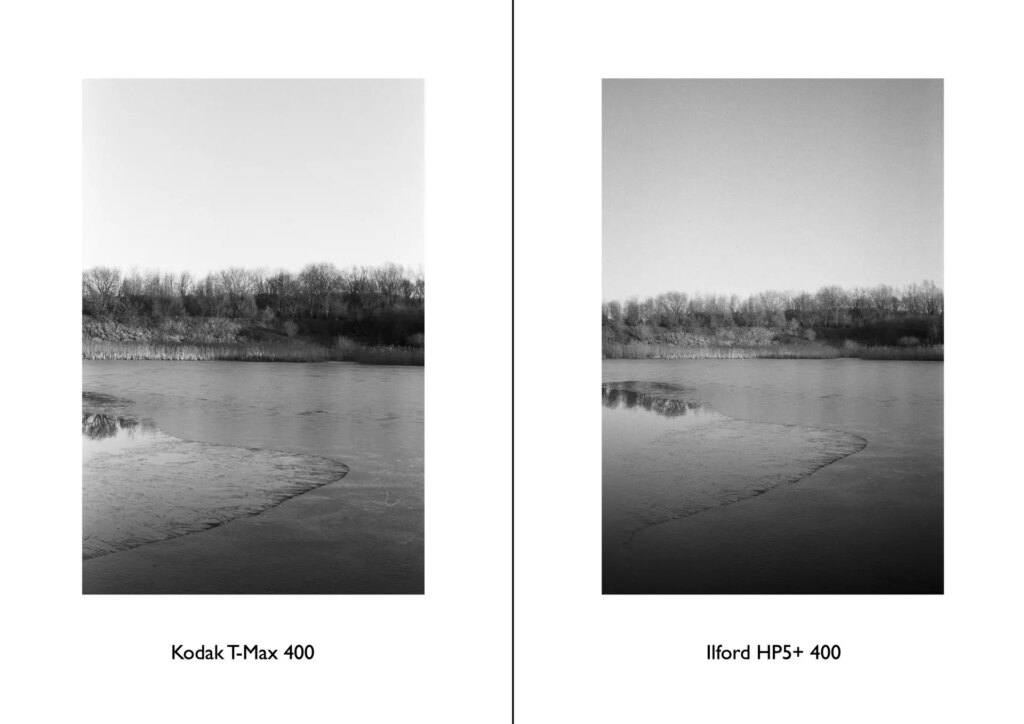
Example 2
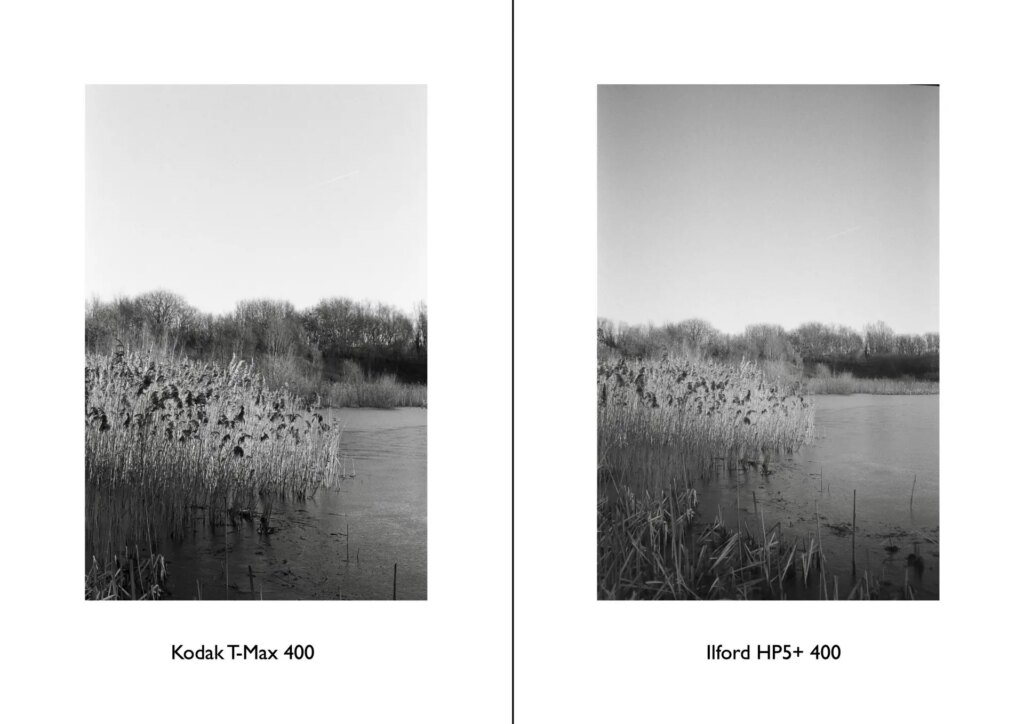
Example 3
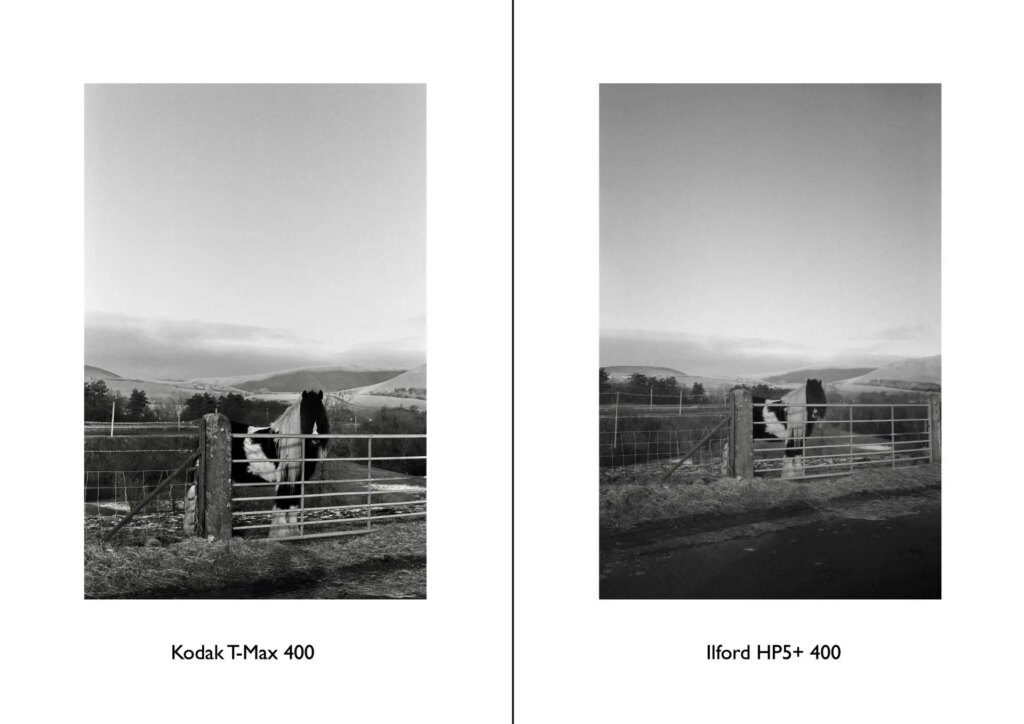
Example 4
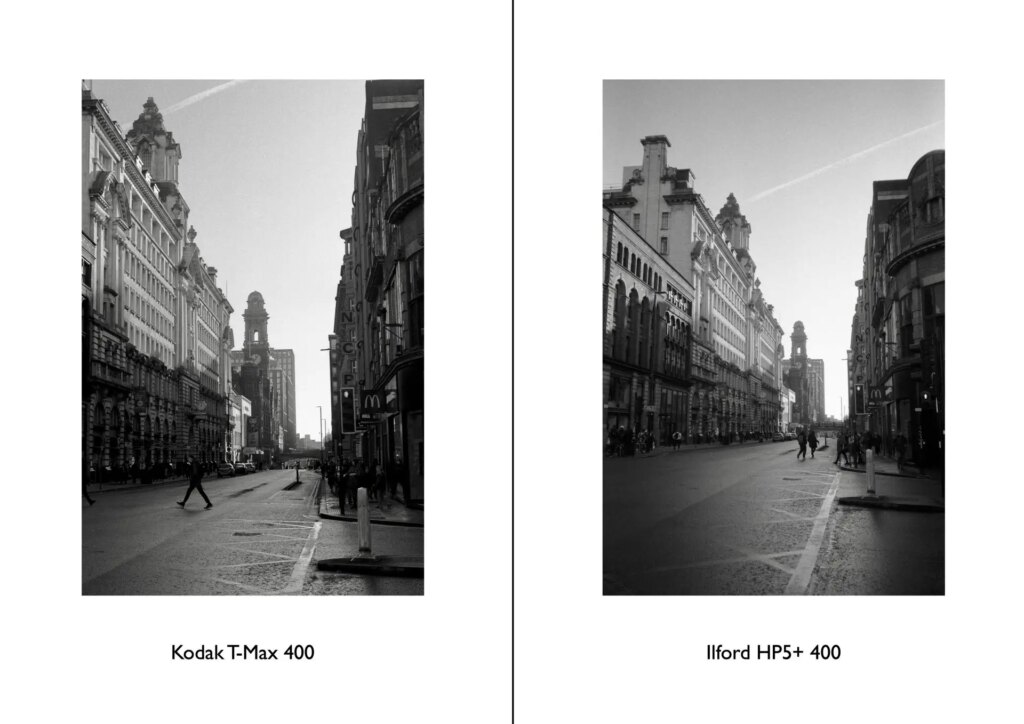
Example 5
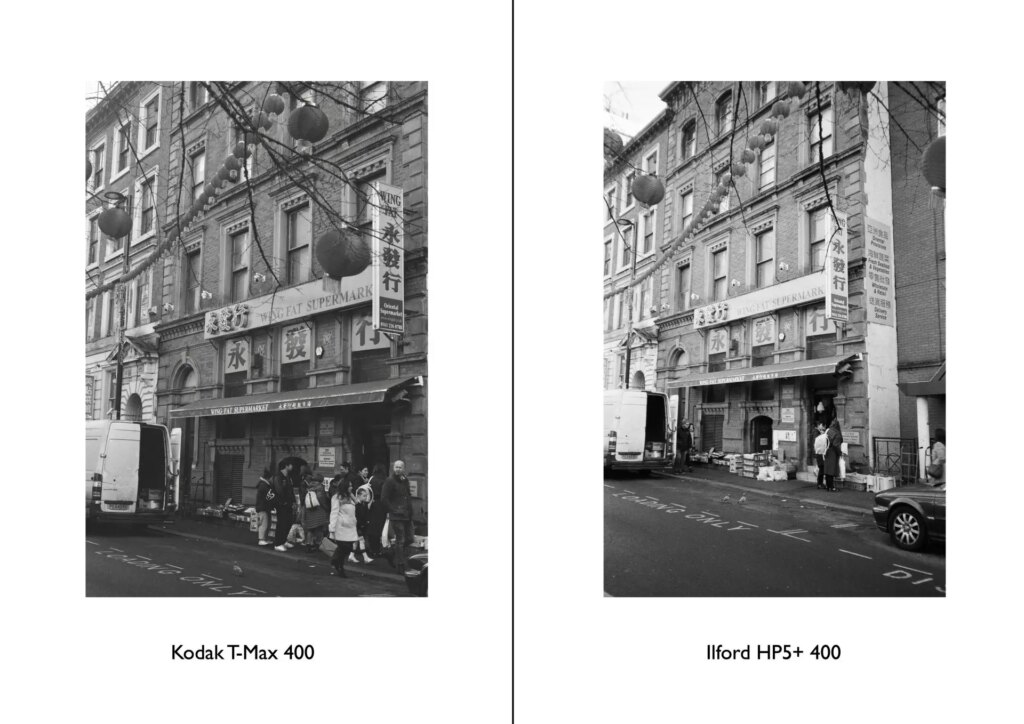
Three Landscape format examples of Kodak T-Max 400 at box speed
Example 6
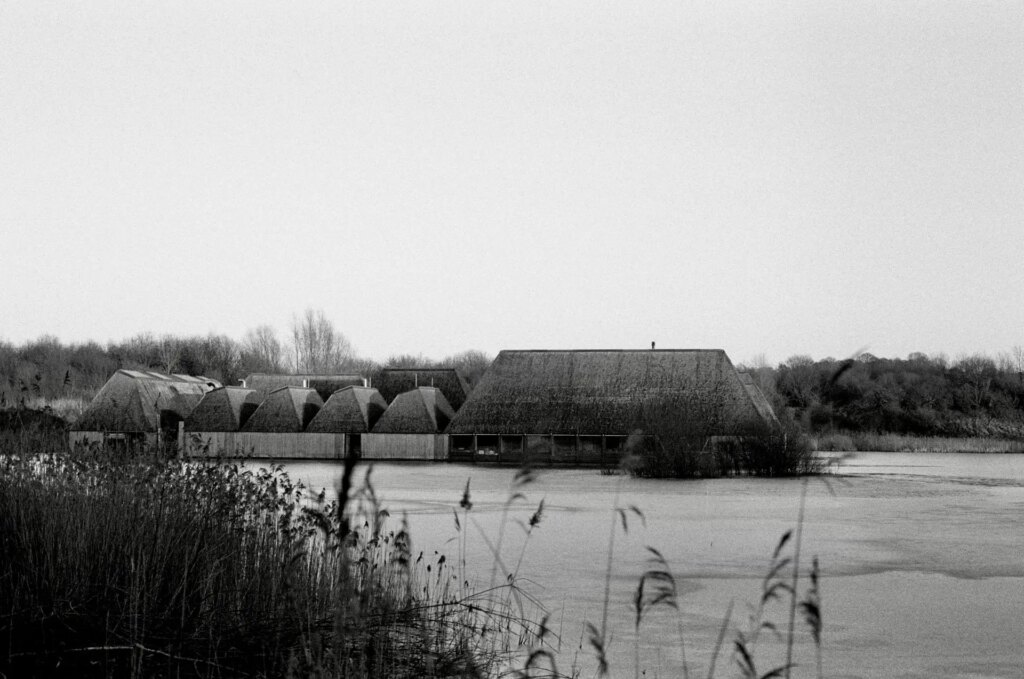
Example 7
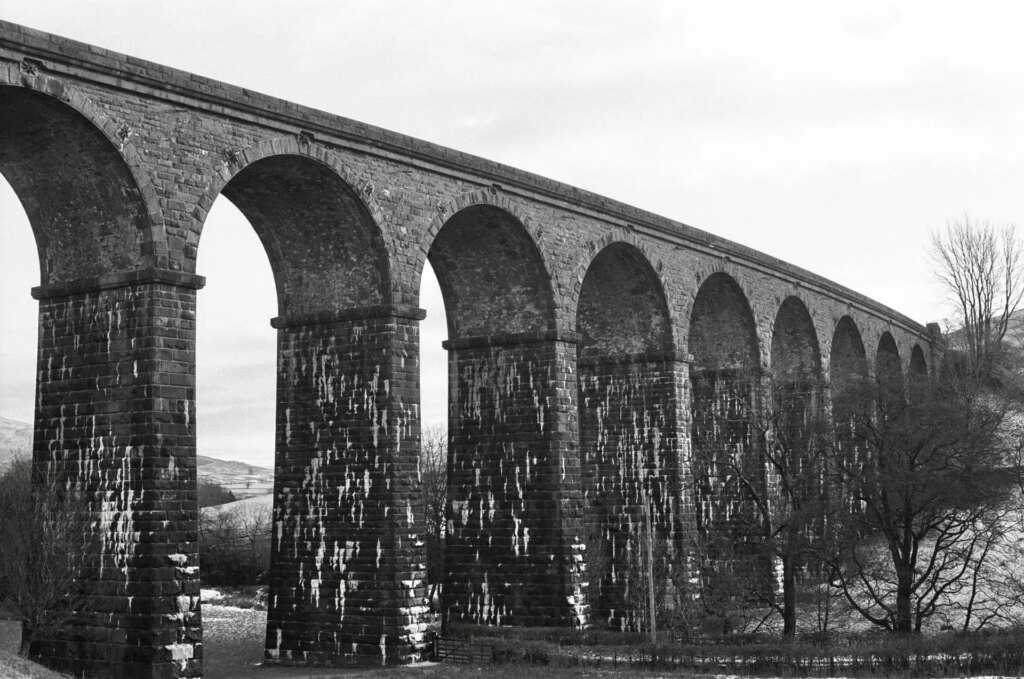
Example 8

Final Thoughts
I’m very happy with the results of trying Kodak T-Max 400, it definitely has its own personality compared to my usual Ilford HP5+. In my opinion, the T-Max results have given more ‘punch’ and ‘clarity’ to the images, and the film seems to have more inherent contrast than other ISO 400 speed stocks. I personally enjoyed the street photography shots, as I felt that the film brings out the details on buildings and subjects really well. I will be definitely be keeping T-Max 400 in mind for future use when I want a film stock with attitude – if you haven’t tried it yet, it’s definitely worth a go, and you don’t have to be a professional to use it haha!
What has your experience been with Kodak T-MAX 400? Do you prefer it just for certain situations, or is it a regular go-to film for you? Let me know in the comments below.
For more articles on 35mmc featuring Kodak T-Max 400 click here.
For more technical information on Kodak T-Max 400 please view the data sheet here.
All scans were developed and processed by Come Through Lab in Ancoats, Manchester.
Find them on instagram here: @comethroughlab .
Thanks for reading, and I look forward to sharing more of my photos and experiences with this community soon.
You can find me on Instagram: @tedayre
Disclaimer:
Please remember this article is not science but subjectivity, with me sharing what I think about each image, and what values I see in them. I want you to know that I have indeed done a bit of post-processing on each image to get ‘the best’ out of the scan for my own taste. As someone who does not engage with darkroom culture, I want to share my results so that others can see another example of what they might expect back from their local lab. I do not claim to present this information as the definitive ‘version’ of the film stock, but just as a reference point along my own film photography journey.
Share this post:
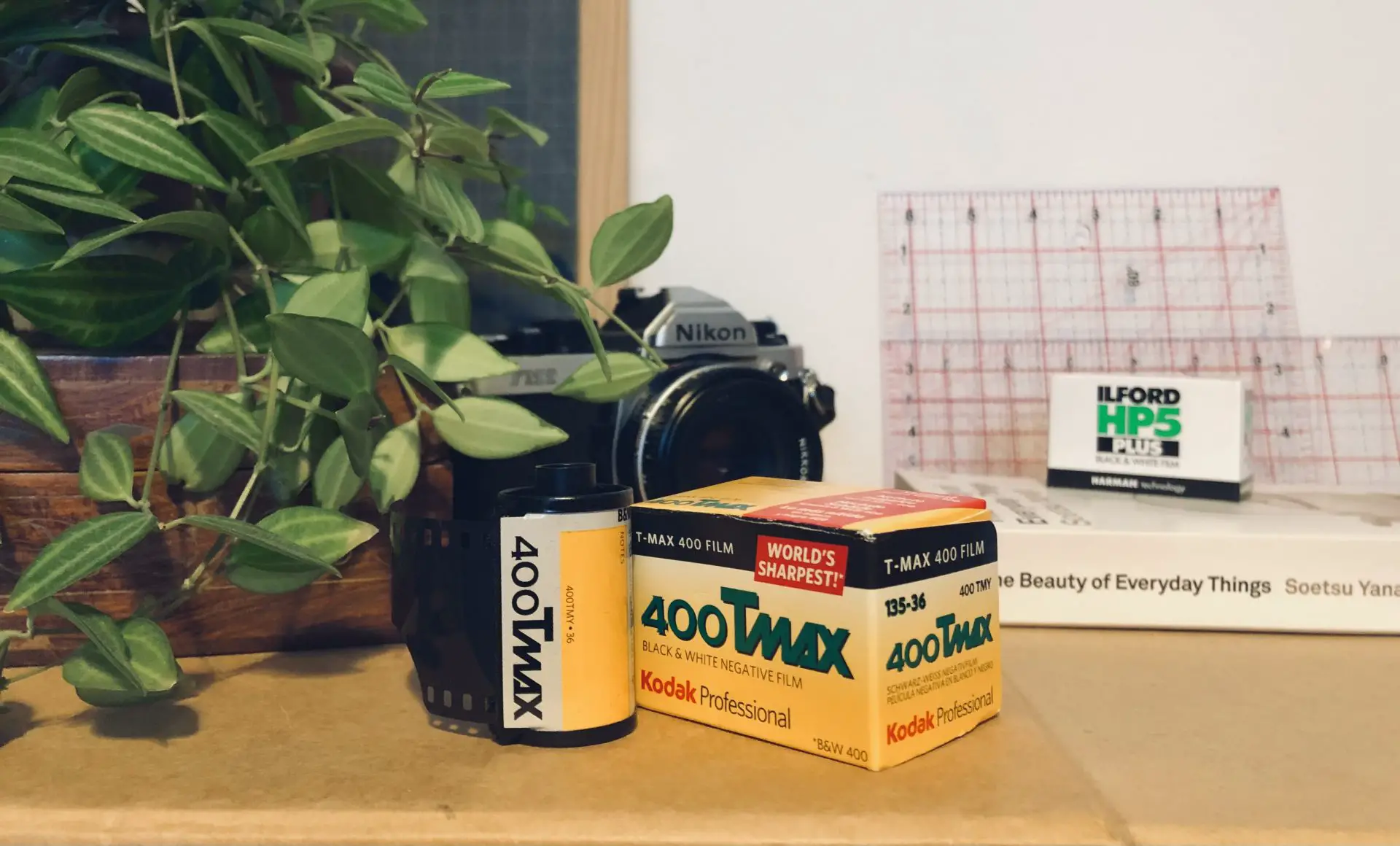








Comments
Ibraar Hussain on Kodak T-Max 400 – Is it my cup of T-grain? – Quick Film Review – By Ted Ayre
Comment posted: 12/03/2023
Comment posted: 12/03/2023
Davcid Hill on Kodak T-Max 400 – Is it my cup of T-grain? – Quick Film Review – By Ted Ayre
Comment posted: 12/03/2023
Thanks again,
Dave
Comment posted: 12/03/2023
Ken Rowin on Kodak T-Max 400 – Is it my cup of T-grain? – Quick Film Review – By Ted Ayre
Comment posted: 12/03/2023
Comment posted: 12/03/2023
Bruno on Kodak T-Max 400 – Is it my cup of T-grain? – Quick Film Review – By Ted Ayre
Comment posted: 12/03/2023
Comment posted: 12/03/2023
Steve on Kodak T-Max 400 – Is it my cup of T-grain? – Quick Film Review – By Ted Ayre
Comment posted: 12/03/2023
Comment posted: 12/03/2023
Bill Watts on Kodak T-Max 400 – Is it my cup of T-grain? – Quick Film Review – By Ted Ayre
Comment posted: 12/03/2023
Comment posted: 12/03/2023
Stephen Fretz on Kodak T-Max 400 – Is it my cup of T-grain? – Quick Film Review – By Ted Ayre
Comment posted: 12/03/2023
Comment posted: 12/03/2023
DANIEL J CASTELLI on Kodak T-Max 400 – Is it my cup of T-grain? – Quick Film Review – By Ted Ayre
Comment posted: 12/03/2023
Back in the day before digital was even a gleam in the eye of Kodak, I worked at a professional photo establishment. We carried high end equipment, never sold anything at discount (employees could buy at cost, but being a broke college student, I never could afford any of the gear.)
Our clients were aerospace manufacturers, a US Navy shipyard, etc. We only sold Kodak professional products. Back then, what made the product 'professional' was that it was released to the retailers with a shortened exp. date. Like wine and blue cheese, professional films were aged so their release date coincided with the peak performance of the film.
Comment posted: 12/03/2023